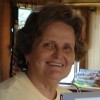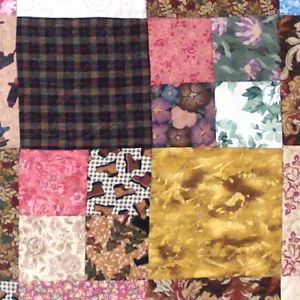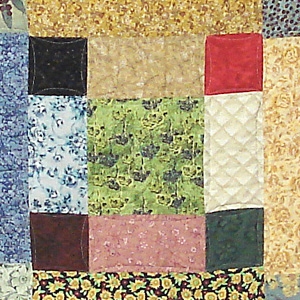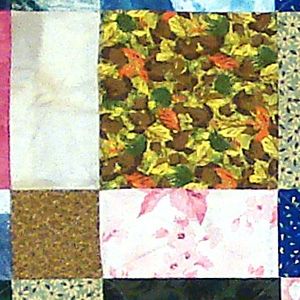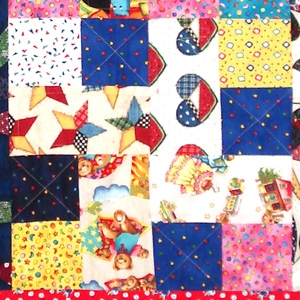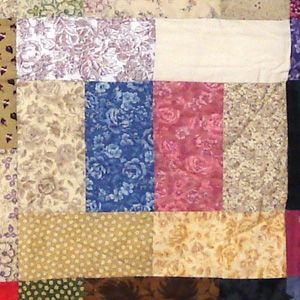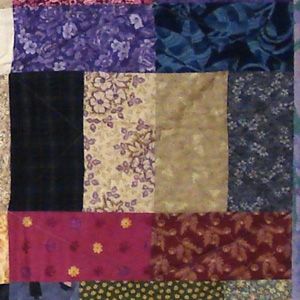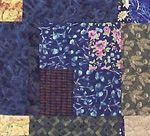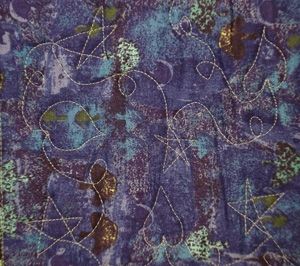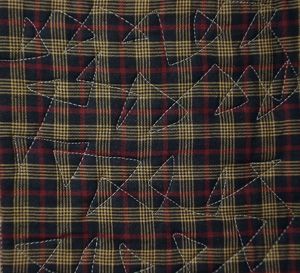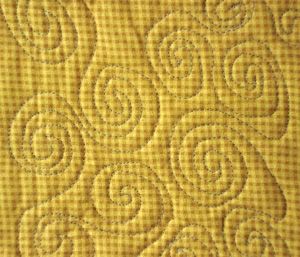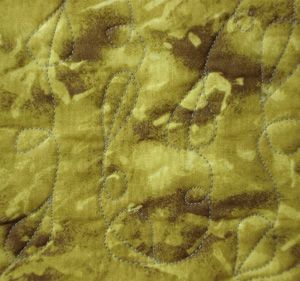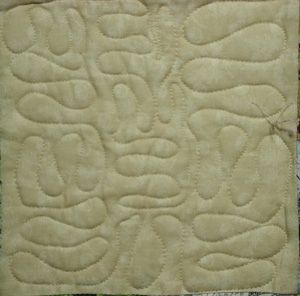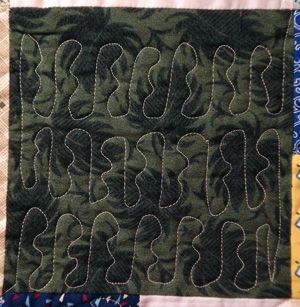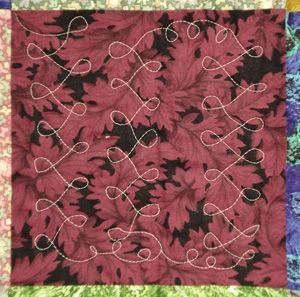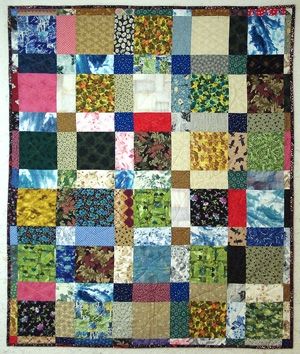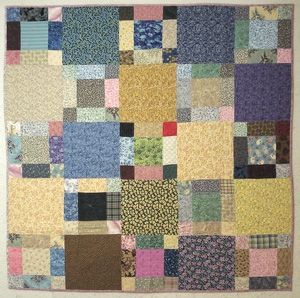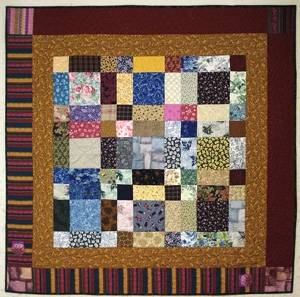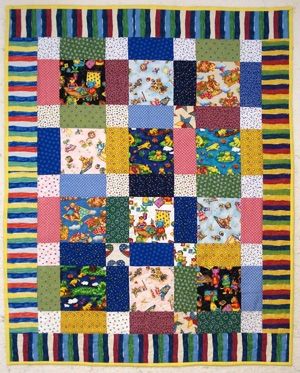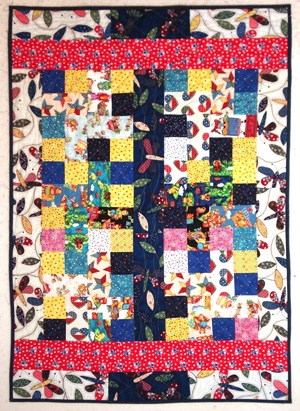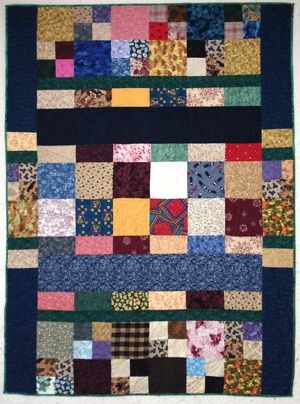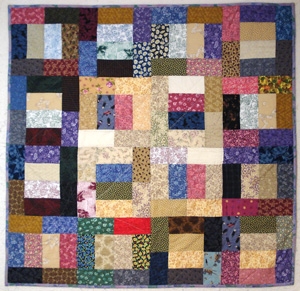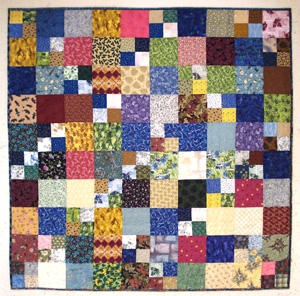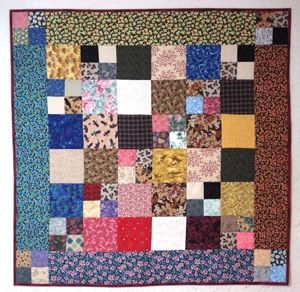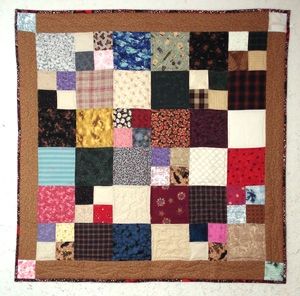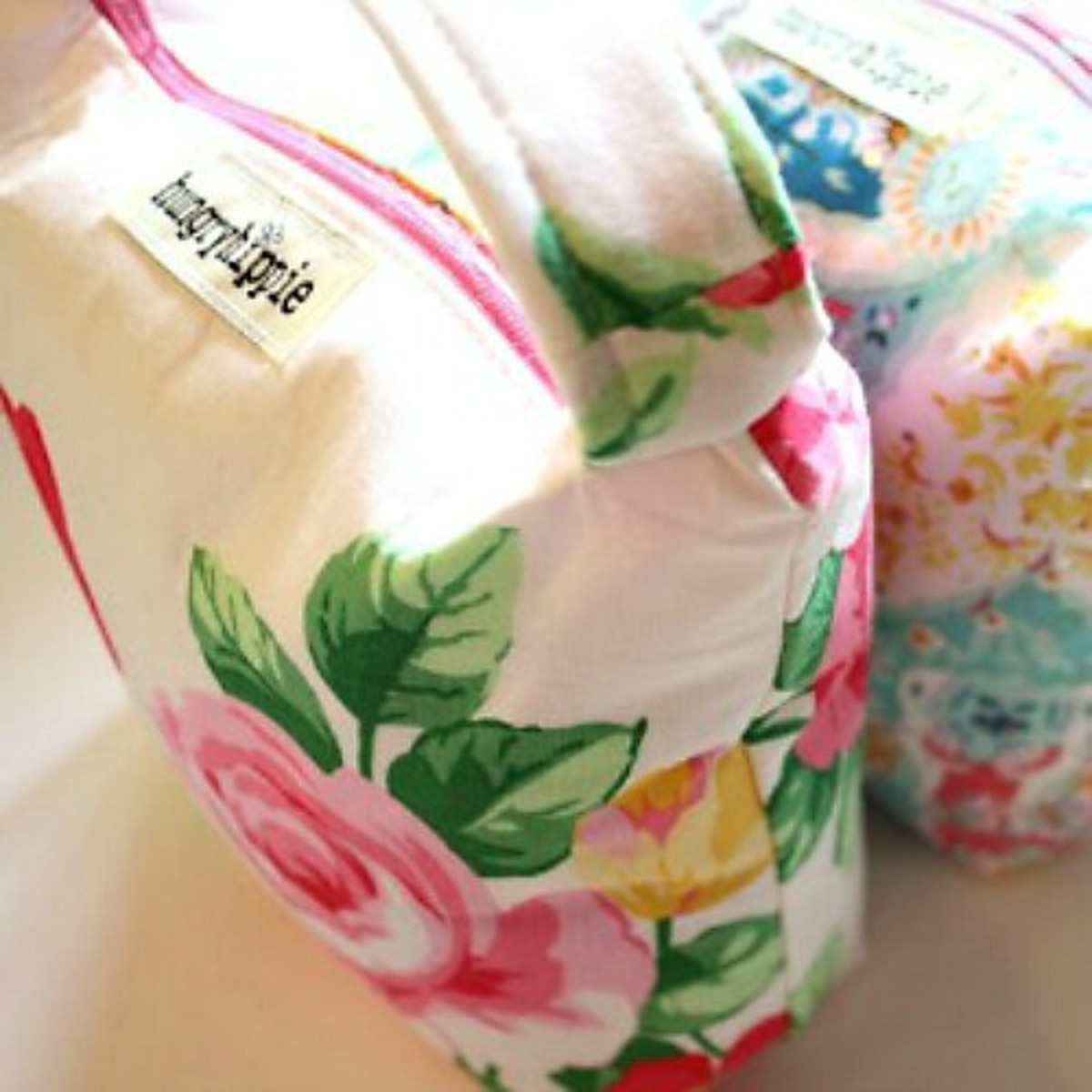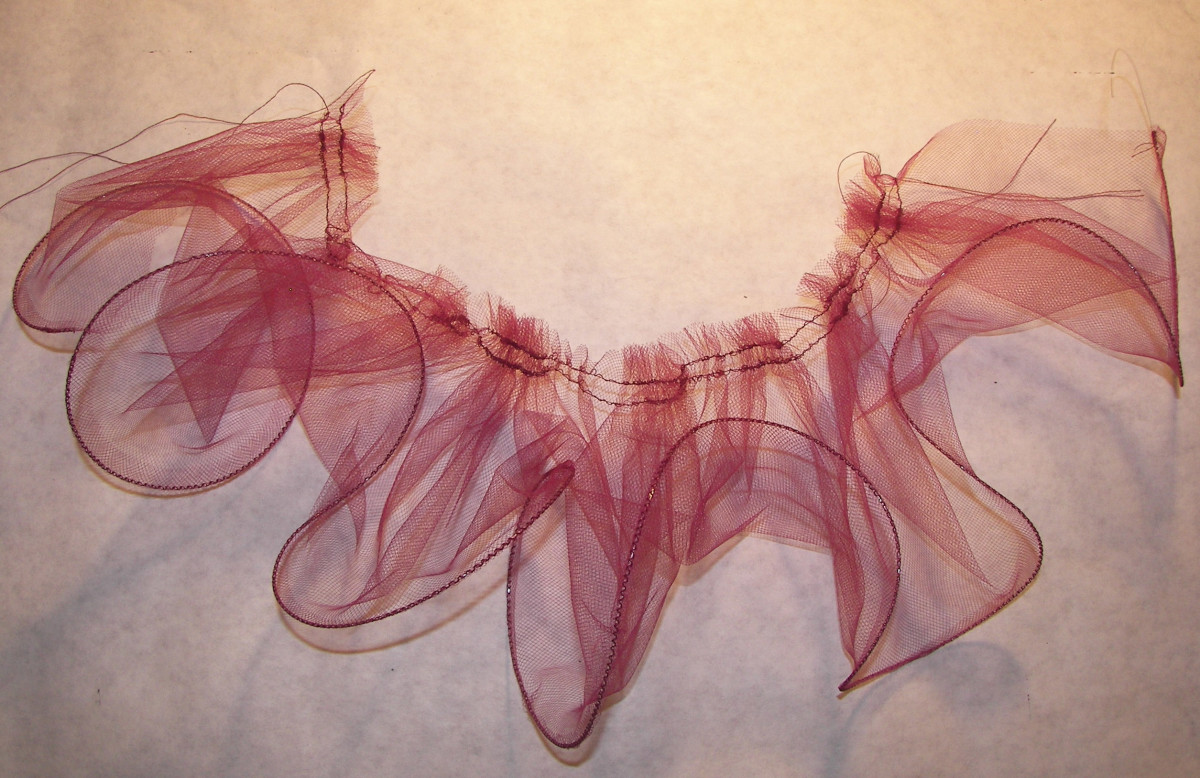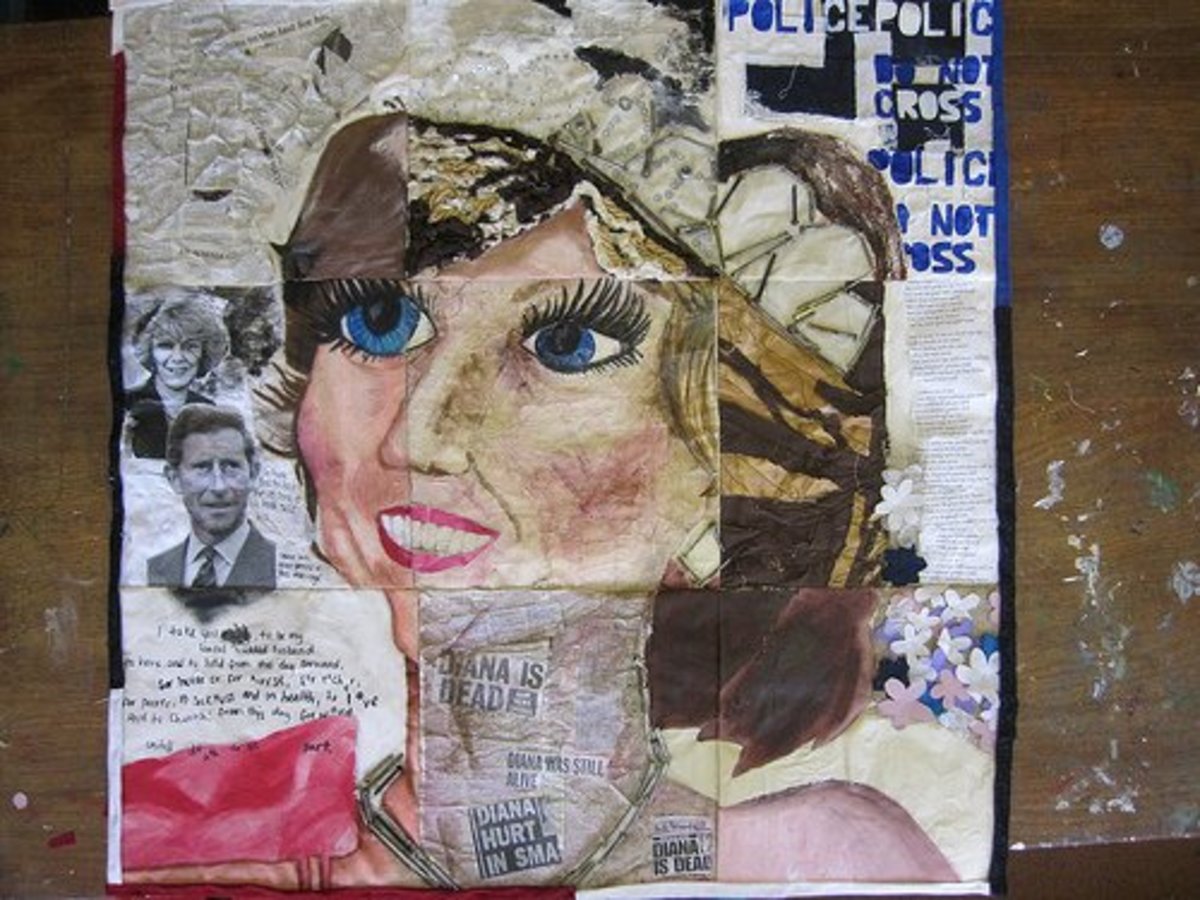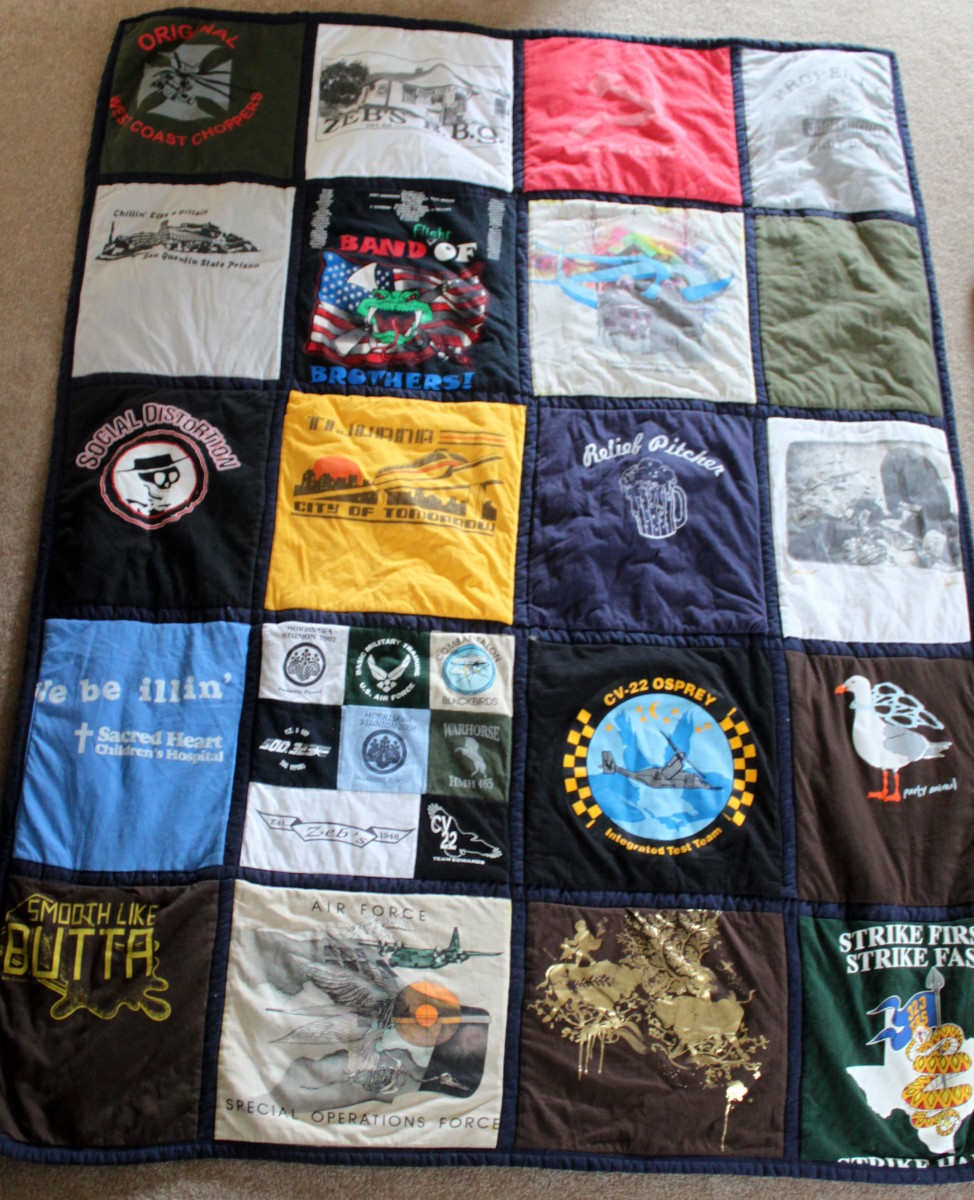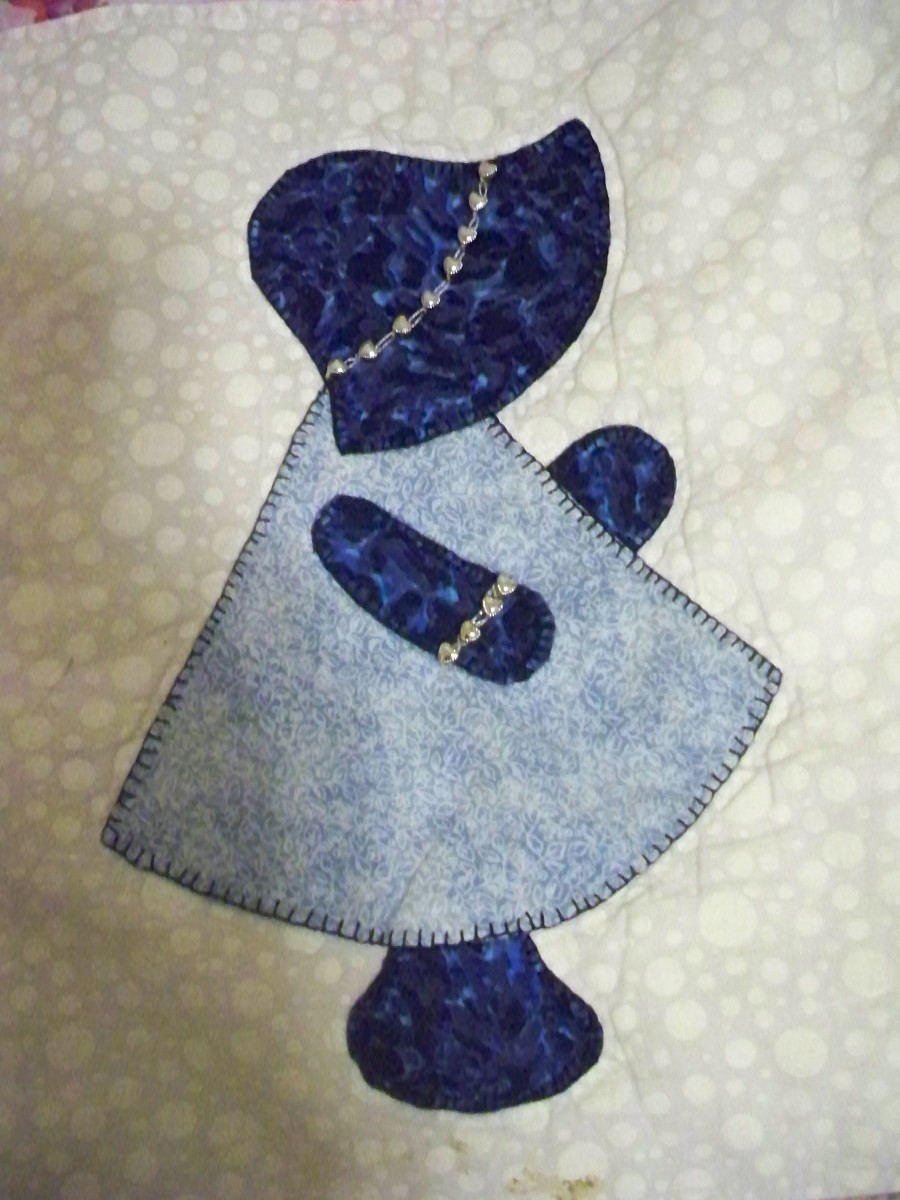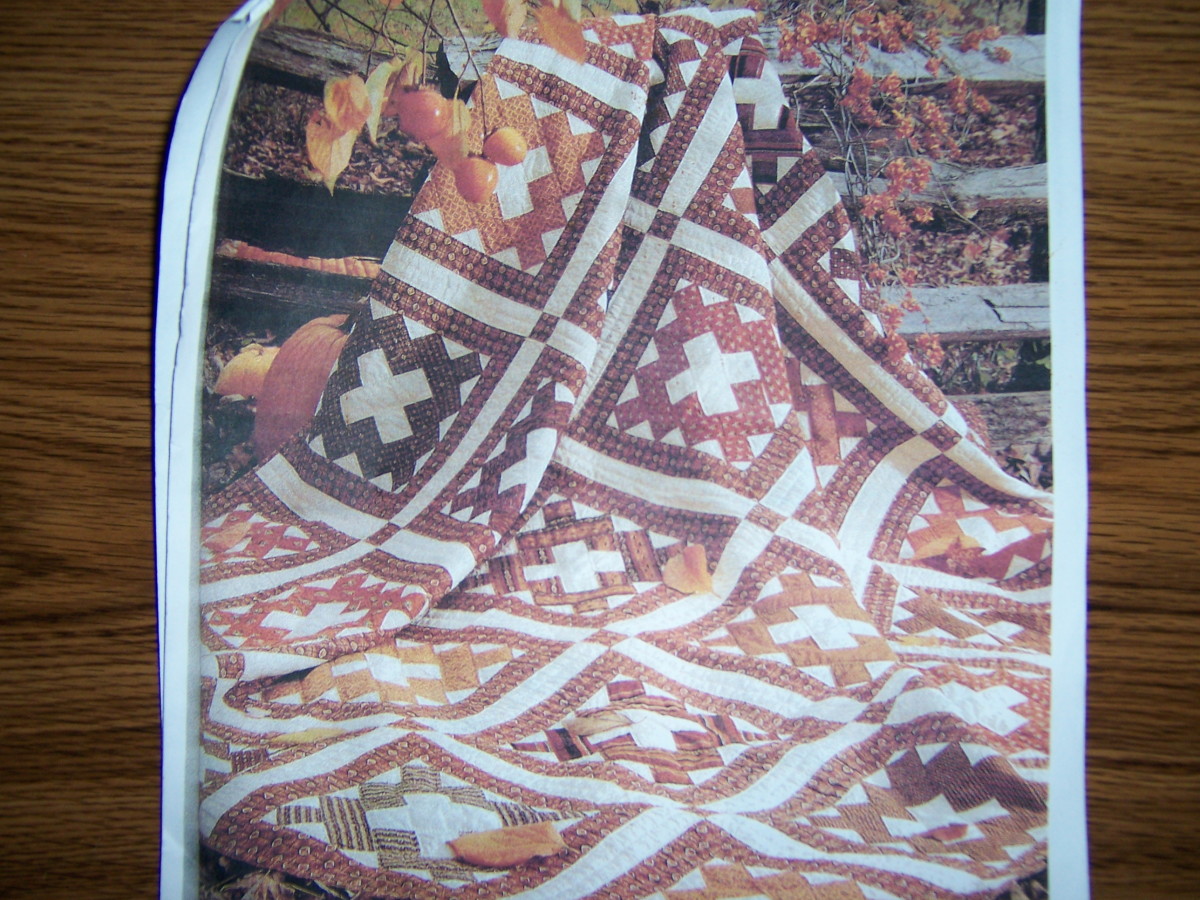Charity quilts: Cancer Council quilts project
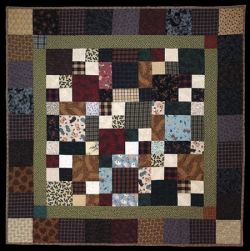
Making quilts for others who need a helping hand
Quilters from all walks of life are ready to help whenever the call goes out that people are in need. And the help they give? They make quilts, of course!
Quilts to be raffled for fund-raising, quilts for the elderly in nursing homes, quilts for neonatal babes, quilts for bushfire or flood victims, quilts for sick children in hospitals and quilts for cancer research.
This is the story of fourteen quilts made from the blocks sewn by non-quilters — from six years old to 75 years young — at a craft and quilt fair in Brisbane in 2003. The quilts were to be auctioned for the Cancer Council.
One of the Cancer Council quilts made in Brisbane: © 2003-2020 Jan T Baillie
A brilliant idea was hatched
by the national sales manager of a sewing machine company
We would make a few quilts to be auctioned for the benefit of the Cancer Council.
How did I come to be involved?
At the time I was the Australian quilting consultant for the firm.How was the project to be implemented?
Read on...The sewing machine company
was to provide:
Nine sewing machines, a three metre long stand at the fair, as well all the quiltmaking tools and other supplies.
They were to arrange the publicity on television and radio, and in the print media.
As well, the sales manager was to seek donations of fabric and threads from the Australian patchwork industry wholesalers.
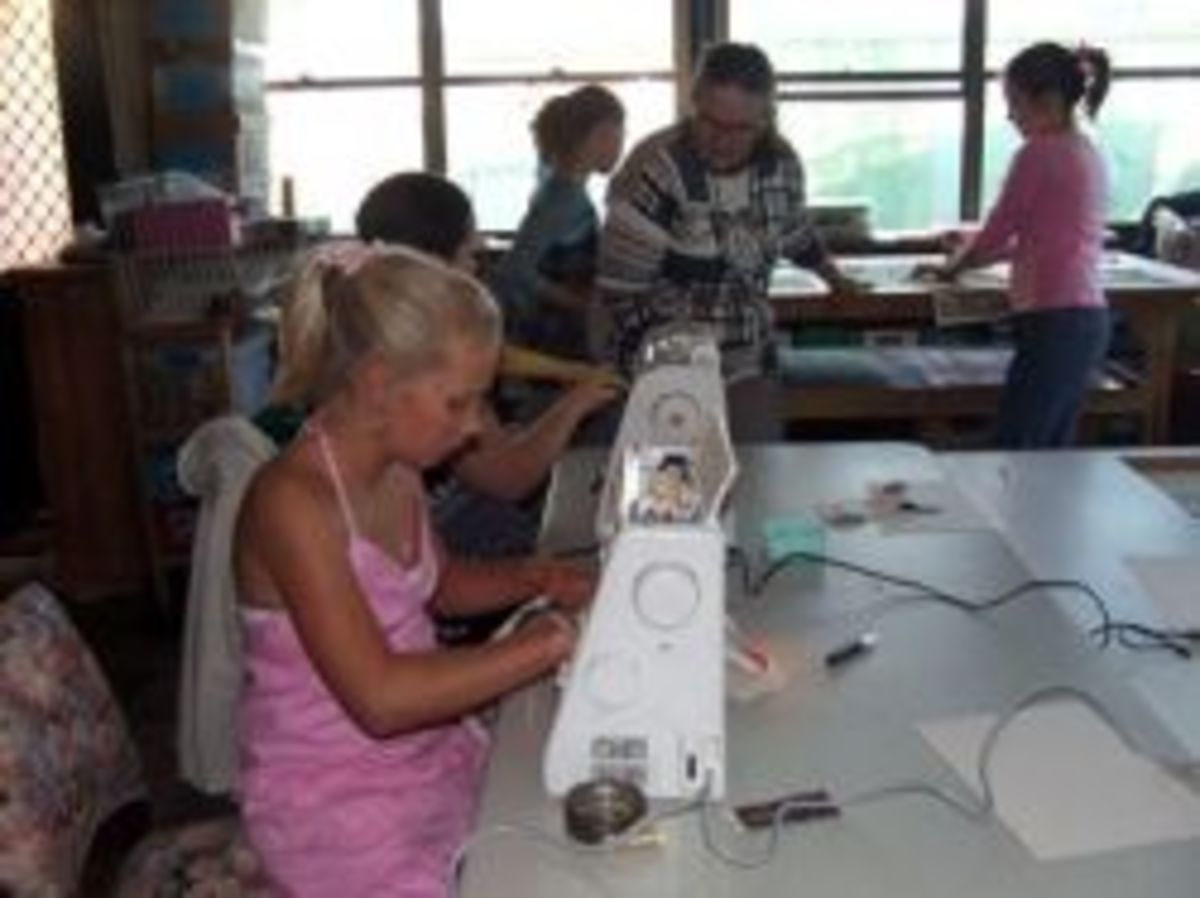
I was to provide:
my quiltmaking expertise,
my teaching know-how,
my people skills.
That's me teaching some girls in my studio in 2008
The stand at the Quilt Fair was set up
and ready for me, complete with volunteer labour
There were machines, cutting boards, reels of thread, boxes of filled bobbins, iron, ironing board, pins...
...in short all that I needed, except fabric.
But there was a BIG box on the cutting table.
What was in the big box?
Loads and loads of fabric samples
Mostly pieces about 20 inches by about 12 inches, they were the cardboard 'hangers' that fabric salesmen carry to show their customers the current ranges of fabric. There were three or four one metre pieces of fabric and a bundle of hand-dyed fat quarters in the bottom of the box.
All my volunteer helpers and the salespeople from the sewing machine company who had arranged all the supplies, were sure I could do nothing good with these oddments of uncoordinated fabric scraps.
They were so wrong.

Start by sorting the fabrics
into piles
Piles of nursery style fabrics, strong geometric prints, and the large pieces were put into their own piles, while the rest were sorted into two piles: lights or darks.
This is a technique I devised in my Listen With Your Eyes system, developed in 1990. Sorting into lights or darks without reference to the pattern, takes the stress out of matching and choosing colours for patchwork quilts.
The quilt is called Hugs and Kisses All Over Oz, and uses these light/dark principles, with no reference to colour or pattern, to produce the design.
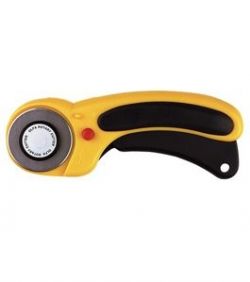
Rotary cutting patches for quilts
was a new skill for my helpers
My first task was to teach the workers the safe use of rotary cutting tools.
Gail (a volunteer who had opted to do one half day stint, and who came every day, all day for five days) had never liked patchwork, or quiltmaking. She said it was not her cup of tea. Her friend, Carol(?) was of the same opinion.
I decided that since all my helpers were not patchworkers, and had never done any rotary cutting before, that I would keep the quilt designs as simple as possible.
The other consideration was that show visitors were to sew patches together, and even to complete blocks for the quilt tops. These people may not even have sewn quilt blocks before.
The patterns for the quilts
were all based on squares and rectangles
Using the same base sizes: 3 ½ inches and 6½ inches, I had the girls cut as many rectangles and squares as they could from several fabrics, and place these into light and dark piles of rectangles, small and large squares.
We had many piles of patches - in light and dark

The doors opened
and the crowd streamed in
To get started, as show visitors were coming up to the stand to make a block, we put one dark rectangle and two light squares beside some machines, one light rectangle with two dark squares beside other machines, and two light with two dark squares beside others.
Some people were shown how to join a small square to each end of a rectangle, others how to add a small dark square to a small light square, and all were directed to the helper who was pressing the seams to one side.
After a while we began to show the people who were then sewing, how to join other parts of the pattern together to make units for the blocks.
Some made several of these units, and even stayed to finish the blocks. Others joined blocks into quilt tops.
First steps - in joining patches

Joining the units into bigger units

Great scrap quilts - in this fabulous book

Joining units into blocks - (Blocks are the basic units of patchwork quilts)
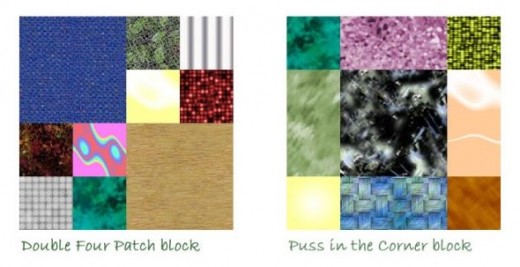
The oldest who was eight, said she thought this was a good idea because her Pa had cancer
Two little girls came to see me
and watch what was happening
The family had heard about the project on the radio that morning. The oldest who was eight, said she thought this was a good idea because her Pa had cancer.
I asked if she would like to join some patches together. With wide eyes, they both answered they would. I told them they must do everything I told them so they didn't sew their fingers, and to wait for me to tell them how to sew. They agreed.
I found some boxes to put under the foot pedals so their little legs could reach, and they did just what I told them to do. Very carefully, they joined patches into units and then made a complete block. They were so proud to be helping.
Later that day, Mum came back to see me and said they would never forget how I let them sew on the quilts. They were so happy to be contributing to the Cancer fund.
The block patterns - and variations of the originals
Click thumbnail to view full-size







The quilting
took two years for me to finish
These quilts were all machine quilted by me, and bound by my daughter Angela.
The quilting was a long time because there were many quilts, from cot-sized to queen-sized. That's a lot of quilting on a domestic sewing machine!
Here are some of the quilting designs:
Machine quilting stitchery - on the Cancer Council quilts
Click thumbnail to view full-size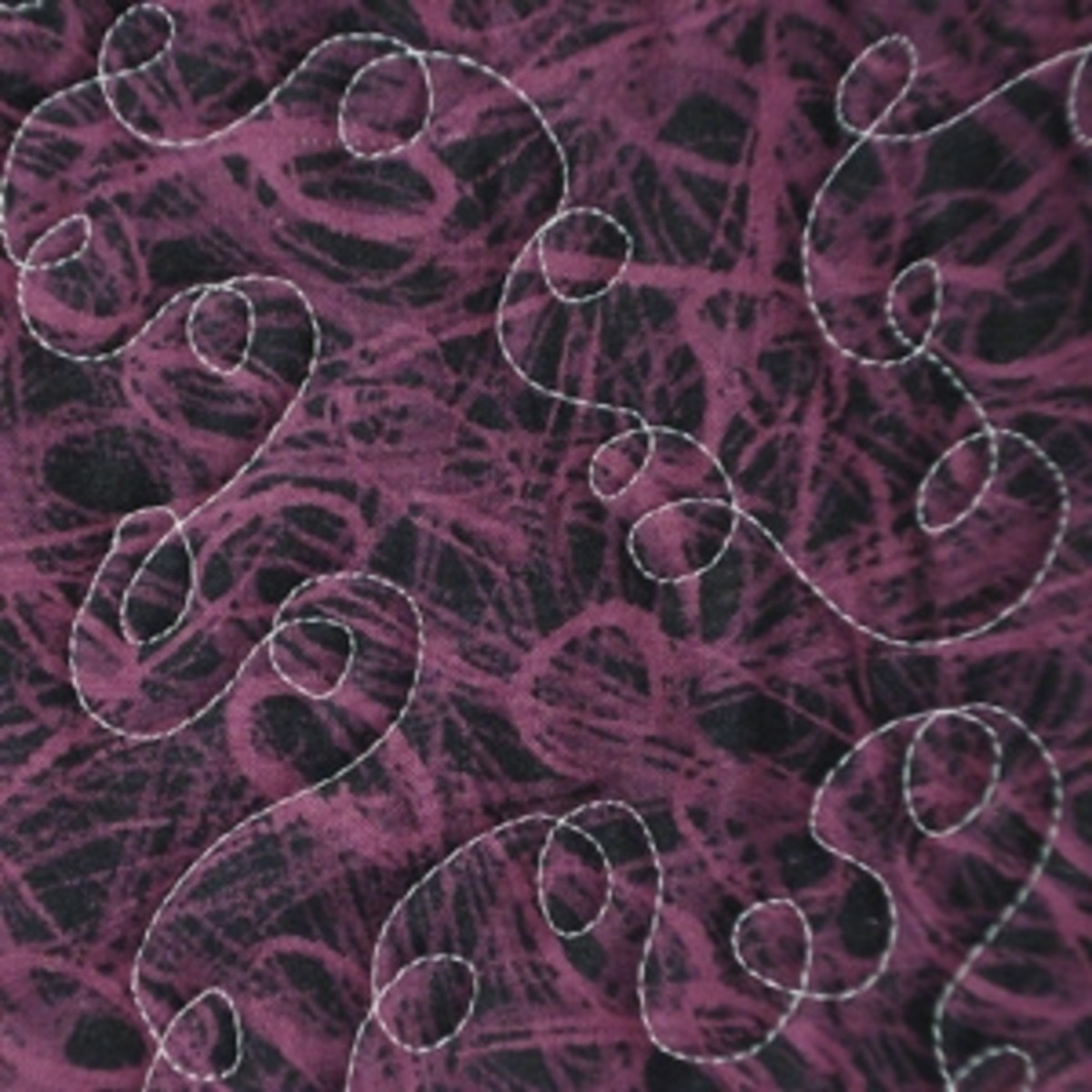








Ten of the fourteen quilts - made from squares and rectangles of mismatched fabrics
Click thumbnail to view full-size









Only ten of the quilts?
What about the other four?
One quilt is at the top of this page — it's my favourite.
A soft pastel coloured quilt, mostly pink, was finished earlier than the others and went to the sewing machine firm in Sydney for promotional purposes, as did a queen-sized flowery one.
Under my guidance, Gail made one using the hand-dyed fabrics, and I quilted it overnight so that some advertising could be done using it as 'pin-up girl'. A small wall-hanging, it had a real oriental feel to it because of the fabrics we used, and Gail fell in love with it.
She said she didn't know patchwork could be so free and such fun. I'm afraid I gave her the quilt pox! She made another quilt some time later in the same design and sent me a photograph.
Gail's quilt - The pattern uses three rectangles in each block

A very satisfying project
and I'd do it again in a minute!
I make quilts for the Children's Hospital in Westmead, Sydney, and so do my students. We make a few per year, not fourteen!
If they asked me to participate again, I would.
I really enjoyed doing the quilts.
As for the fund-raising, I left that part up to the sewing machine company. I'm sure it was a great success, if their publicity had anything to do with it.
Tell me what you think about the quilts
